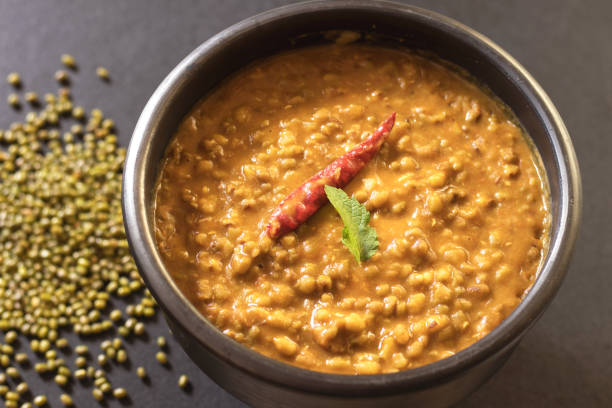What is Moong Dal ?
Moong dal (also spelled as mung dal) is a type of split yellow lentil made from mung beans. It is one of the most commonly used lentils in Indian cuisine and is popular across various South Asian countries. It is known for its high protein content, making it a nutritious and essential part of vegetarian and vegan diets.
To prepare moong dal, whole mung beans are hulled and split, resulting in a small, yellow, and skinless lentil. This splitting process makes it cook relatively quickly and gives it a smooth, creamy texture when cooked.
Types of Moong Dal
There are different types of moong dal available, each with slight variations in taste, texture, and usage. The most common types of moong dal include:
1. Whole Green Dal:
This type of moong dal consists of whole green mung beans, with the green skin intact. It is rich in fiber, vitamins, and minerals. It requires soaking before cooking and has a slightly nutty flavor.
2. Split Yellow Dal:
Also known as yellow dal chilka, this is the most widely used variety of moong dal. It is made by splitting the whole green mung beans and removing the green outer skin, leaving behind the yellow-colored dal. It cooks relatively quickly and has a creamy texture when cooked.
3. Split Yellow Dal without Skin:
This type is made by splitting the whole mung beans without the green skin. It is called ” dhuli” and is a pale yellow lentil. It cooks faster than the split yellow dal with skin and is used in various Indian dishes.
4. Split with Husk:
This type of moong dal is made by splitting the whole mung beans with the green skin still attached. It is called ” dal sabut” and is often used in Indian curries and dals.
5. Dal Flour:
This type is ground into a fine powder or flour. It is used to make various dishes like dosa and pancakes.
Each type has its unique characteristics and culinary uses. The choice of moong dal depends on the specific recipe and the desired texture of the dish you want to prepare.
How To cook Moong Dal ?
Cooking moong dal is a straightforward process, and it can be prepared in various ways depending on the dish you want to make. Here’s a basic recipe for cooking it as a simple, savory side dish:
Ingredients:
– 1 cup yellow split mung beans
– 3 cups water
– 1 tablespoon oil or ghee (clarified butter)
– 1/2 teaspoon cumin seeds
– 1/2 teaspoon mustard seeds
– 1 small onion, finely chopped (optional)
– 2-3 garlic cloves, minced
– 1-inch piece of ginger, grated or finely chopped
– 1 or 2 green chilies, slit (adjust according to your spice preference)
– 1/2 teaspoon turmeric powder
– Salt to taste
– Fresh coriander leaves for garnish (optional)
– Lemon wedges for serving (optional)
Instructions:
1. Rinse and Soak the Moong Dal:
– Rinse the moong dal in cold water until the water runs clear to remove any impurities.
– Soak it in enough water for about 30 minutes. This step is optional but helps in reducing the cooking time.
2. Cook the Moong Dal:
– Drain it and add it to a saucepan or pressure cooker.
– Add 3 cups of water to it.
– If using a saucepan, bring the water to a boil over medium-high heat, then reduce the heat to low, cover, and simmer until the moong dal is soft and fully cooked. This can take around 20-25 minutes. If using a pressure cooker, cook the dal for 2-3 whistles.
3. Prepare the Seasoning:
– In a separate small pan, heat the oil or ghee over medium heat.
– Add cumin seeds and mustard seeds to the hot oil. Let them splutter.
– Add chopped onions (if using) and sauté until they turn translucent.
4. Add Spices:
– Add minced garlic, grated ginger, and slit green chilies to the pan. Sauté for a minute until the raw aroma disappears.
5. Add Cooked Dal:
– Once the dish is cooked, add it to the pan with the seasoning. Be careful as it may splutter when you add it to the hot oil.
– Stir in turmeric powder and salt to taste. Mix everything well.
6. Simmer and Garnish:
– Let the dal simmer for a few more minutes on low heat so that the flavors meld together.
– Garnish with chopped coriander leaves (if using).
7. Serve:
– Your dish is now ready to serve. You can enjoy it as a side dish with rice or Indian bread (roti, naan) or even as a simple soup.
Optional:
For added tanginess, you can squeeze some lemon juice over the dal before serving.






